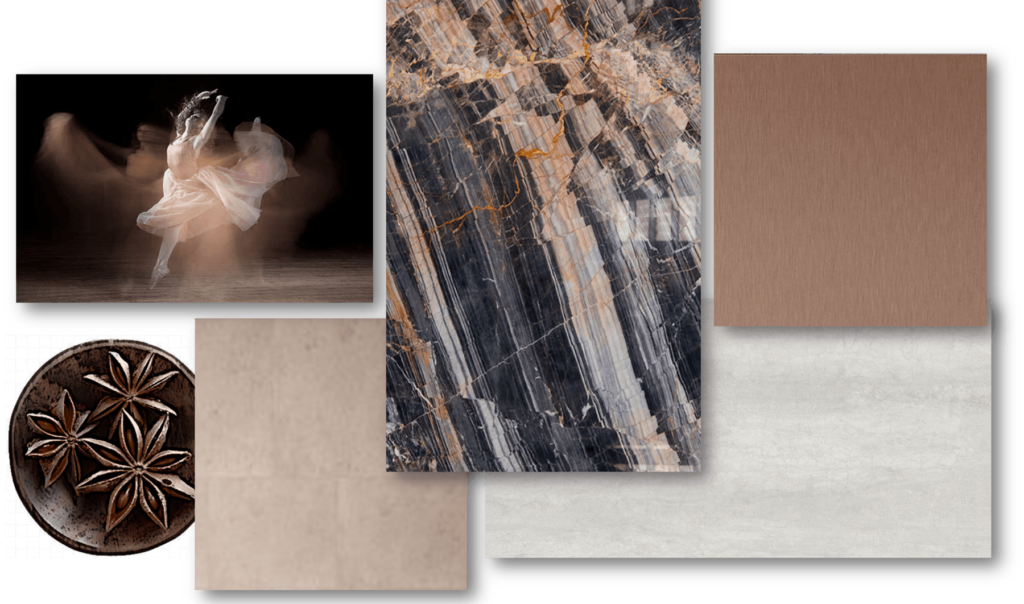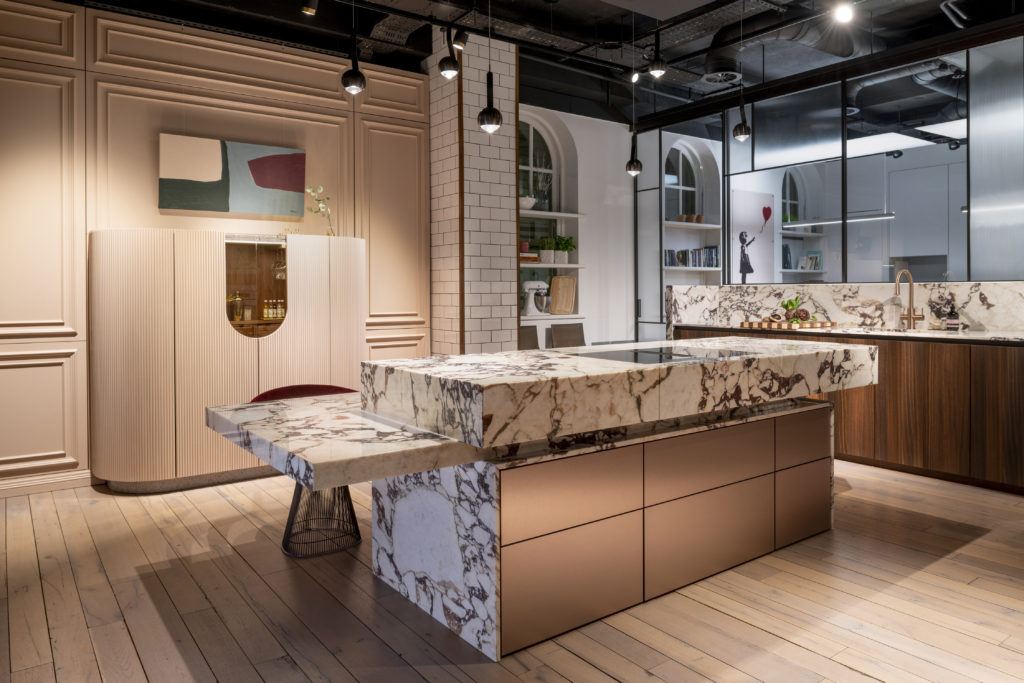
Used for centuries, natural stone is the material that mankind has used since the dawn of time to express themselves and humanity. We instinctively perceive these prehistoric materials as precious, and have consistently sought to bend them to our will or draw on their silent strength, using them for symbolism, energy, wellbeing, art, architecture and design. Why does their allure persist? Here are our thoughts.
The power of stone
Natural Stone has been the main material for construction for millennia. We see it from the Pyramids in Egypt to Michelangelo’s David, and even in our kitchen floors and countertops. Today, we still use stone, valuing it for its beauty and, perhaps less consciously, because of our need to feel connected to nature. We talk a lot about biophilic design, but it’s not just plants that connect us to the earth; it’s all natural materials, including wood and stone.

Stone is particularly popular for flooring in the home, and aside from its natural properties – being generally hard wearing and conducive to warmth (underfloor heating) and cold, there’s a very good reason for that. Having our feet connected to nature is profoundly soothing. Some refer to it as earthing or grounding – connecting the body directly with the Earth and using its natural electric charges to stabilise us, simply by walking barefoot.
On a practical note, stone is a wonderful material for kitchens because its natural state doesn’t change cooking ingredients as you work them – you can work dough on it for example without warming it up. Our Design Director, Niko Rasides, recalls his grandmother in Greece, preparing food for 10 on a tiny marble worktop. Its purpose was entirely utilitarian and common practice, marble being the cheapest material available and the most practical for the task at hand.
Precious stone
Today, we know that marble is an excellent investment for your home, adding to a culinary space that will not only stand the test of time but grow more beautiful with age. It’s now considered more luxurious, not least because our natural resources are not endless and we have come to realise that we can’t keep taking as much as we like.

Like experts in pursuit of diamonds, we have become discerning about the shape, the colours, the veins and the details in stone, knowing that one piece will never be the same as another. As a result, stone, especially the likes of marble, will always add a one-of-a-kind element to your space. We perceive it as an entity within a space, almost like artwork.
Recognising the beauty of stone, we have elevated its place within the home, making it the centrepiece in a room, whilst also enjoying its functionality. For example, it makes a phenomenal statement as cladding around a fireplace, relishing the different textures, whether rough or honed, leathered or polished, each finish having a different impact on the surrounding environment.
The test of time
Like all beautiful things, stone is not without its weaknesses, and these vulnerabilities only serve to make it more glamorous, reminding us of its living, breathing, evolving nature. Notably, it’s porous, so it can stain. It’s also softer than its manmade counterparts, so it can scratch. However, that ageing process is part of its appeal, growing more beautiful with time. Perhaps in that there’s a lesson for us all.
Having begun its life six million years ago or more, stone is inherently of the earth. It’s a finite resource that was here long before us and will be here long after us. Somewhere at our core, this is why we appreciate it. To have stone in our habitat is a privilege, not because of its modern luxury credentials but because that history, heritage, beauty and all those natural minerals within it impact how we feel about it and our homes. The piece of stone in your space has been made once and once alone by nature – it will never be recreated, and that’s exceptional.
Invest in your space, combining craftsmanship and the most alluring natural materials for an elevated home experience.
Discover our Signature Collection



